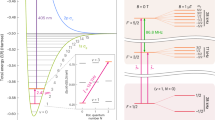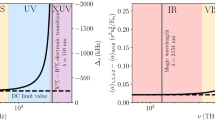Abstract
I THINK there must be some mistake in Prof. Forbes' report of Sir Wm. Thomson's remarks as quoted in NATURE of last week (p. 461) upon the rate of wave-propagation on Maxwell's electro-magnetic theory of light. From the end of the last quotation one would suppose that Sir Wm. Thomson intended to convey that the rate of wave-propagation that Maxwell's theory asserted to be the same as that of light, was the rate of propagation of a variation of a current in a conducting wire. Now Sir Wm. Thomson cannot, I am sure, have intended to convey any such mistaken notion. Maxwell carefully guards against any such mistake by pointing out that conduction of electricity is of the nature of diffusion, and not of a wave-propagation, and so has no definite velocity. What Maxwell has calculated is the rate of propagation of disturbances in non-conductors, and not in conductors. It is the rate at which the disturbances, produced in the way considered by Sir Wm. Thomson in the preceding part of this quotation, would be propagated by transverse vibrations. Of course, as Sir Wm Thomson asserts, something analogous to a longitudinal vibration may co-exist with these, but Maxwell's theory shows that a medium which would transmit only transverse vibrations would explain electric and magnetic phenomena.
This is a preview of subscription content, access via your institution
Access options
Subscribe to this journal
Receive 51 print issues and online access
$199.00 per year
only $3.90 per issue
Buy this article
- Purchase on SpringerLink
- Instant access to full article PDF
Prices may be subject to local taxes which are calculated during checkout
Similar content being viewed by others
Author information
Authors and Affiliations
Rights and permissions
About this article
Cite this article
FITZGERALD, G. Molecular Dynamics. Nature 31, 503 (1885). https://doi.org/10.1038/031503a0
Issue date:
DOI: https://doi.org/10.1038/031503a0



